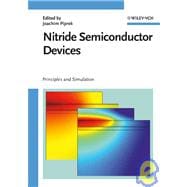This is the first book to be published on physical principles, mathematical models, and practical simulation of GaN-based devices. Gallium nitride and its related compounds enable the fabrication of highly efficient light-emitting diodes and lasers for a broad spectrum of wavelengths, ranging from red through yellow and green to blue and ultraviolet. Since the breakthrough demonstration of blue laser diodes by Shuji Nakamura in 1995, this field has experienced tremendous growth worldwide. Various applications can be seen in our everyday life, from green traffic lights to full-color outdoor displays to high-definition DVD players. In recent years, nitride device modeling and simulation has gained importance and advanced software tools are emerging. Similar developments occurred in the past with other semiconductors such as silicon, where computer simulation is now an integral part of device development and fabrication.
This book presents a review of modern device concepts and models, written by leading researchers in the field. It is intended for scientists and device engineers who are interested in employing computer simulation for nitride device design and analysis.








